The building was severely damaged in the last earthquake in 2004, posing a threat to the safety of people and property. As a result, it was included in the Earthquake Consequences Relief Program in Posočje on July 12, 2004. A decision was made, involving experts from various fields, to demolish the damaged structure and construct a replacement building in its place that would meet the requirements of post-earthquake reconstruction, legislation, and safe construction regulations.
The mining compressor station, once...
The Idrija mercury mine, as one of the leading companies of its time, always sought progress and, due to its business and economic importance, underwent constant improvements. The significant technological advancements experienced by the world in the 19th century also made their mark on the oldest Slovenian mining town. New machines and devices, which achieved higher quality results and better efficiency, found their place among the first in the Idrija mine. Among them were compressor machines and pneumatic hammers, which represented a major technological novelty at the beginning of the 20th century, and only a few mines in Europe at that time could boast such a technical breakthrough.
In 1914, the compressor station started operating on the 4th level, providing sufficient compressed air for 15 drilling machines. In 1926, during the Italian administration of the mine, two existing compressors, one manufactured by Breitfeld, Danek & Co. from Prague and the other from the Kosel factory, were supplemented with a more powerful compressor from Tosi. A new building was constructed in the area of the present-day "Olimp," made of a combination of wood, bricks, and plaster (known as Rieglebau). From the new building, a pipe ("ruri") with a diameter of 114.3 mm was laid towards the Jožef Shaft and the Inzaghi Shaft, through which compressed and warm air flowed.
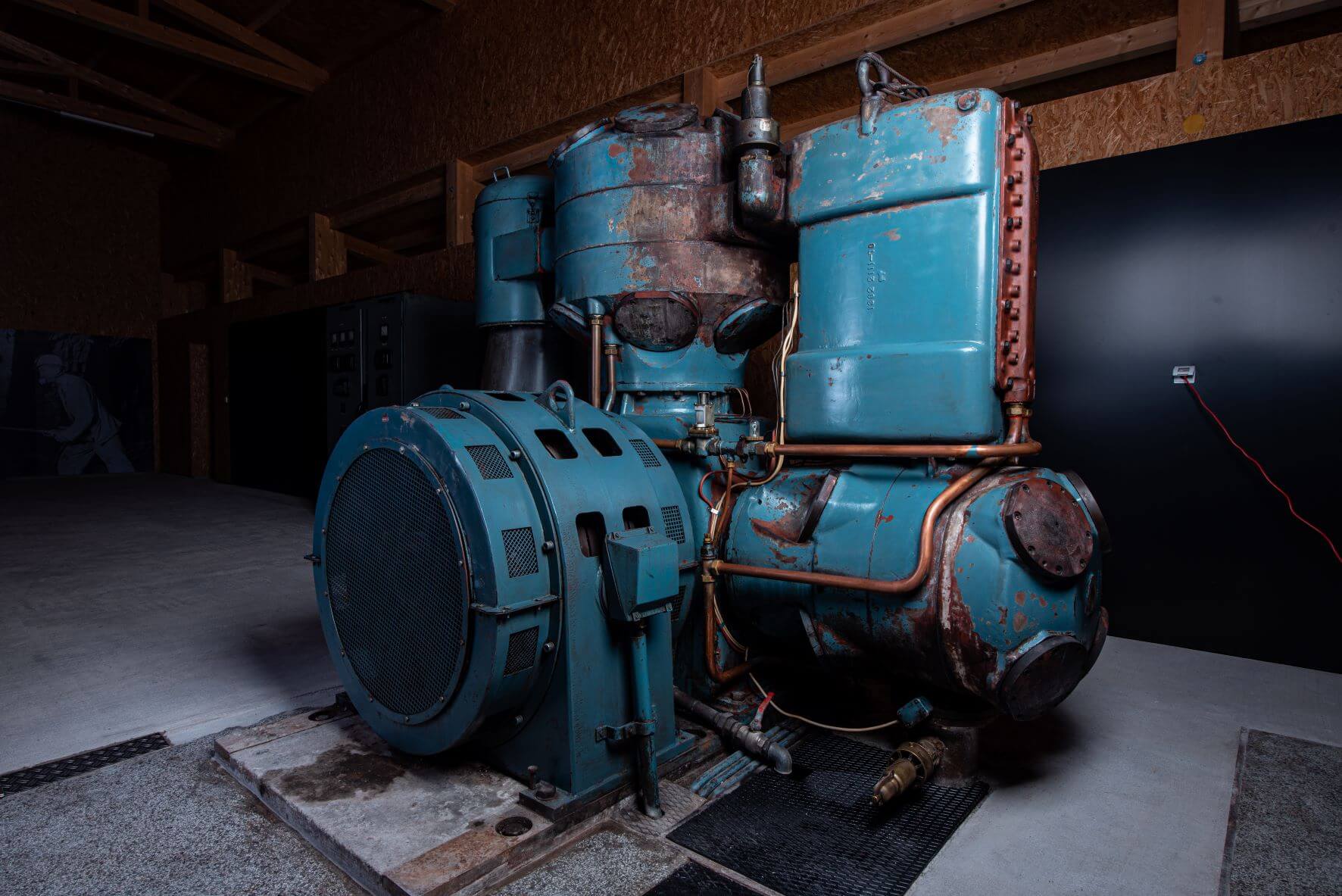
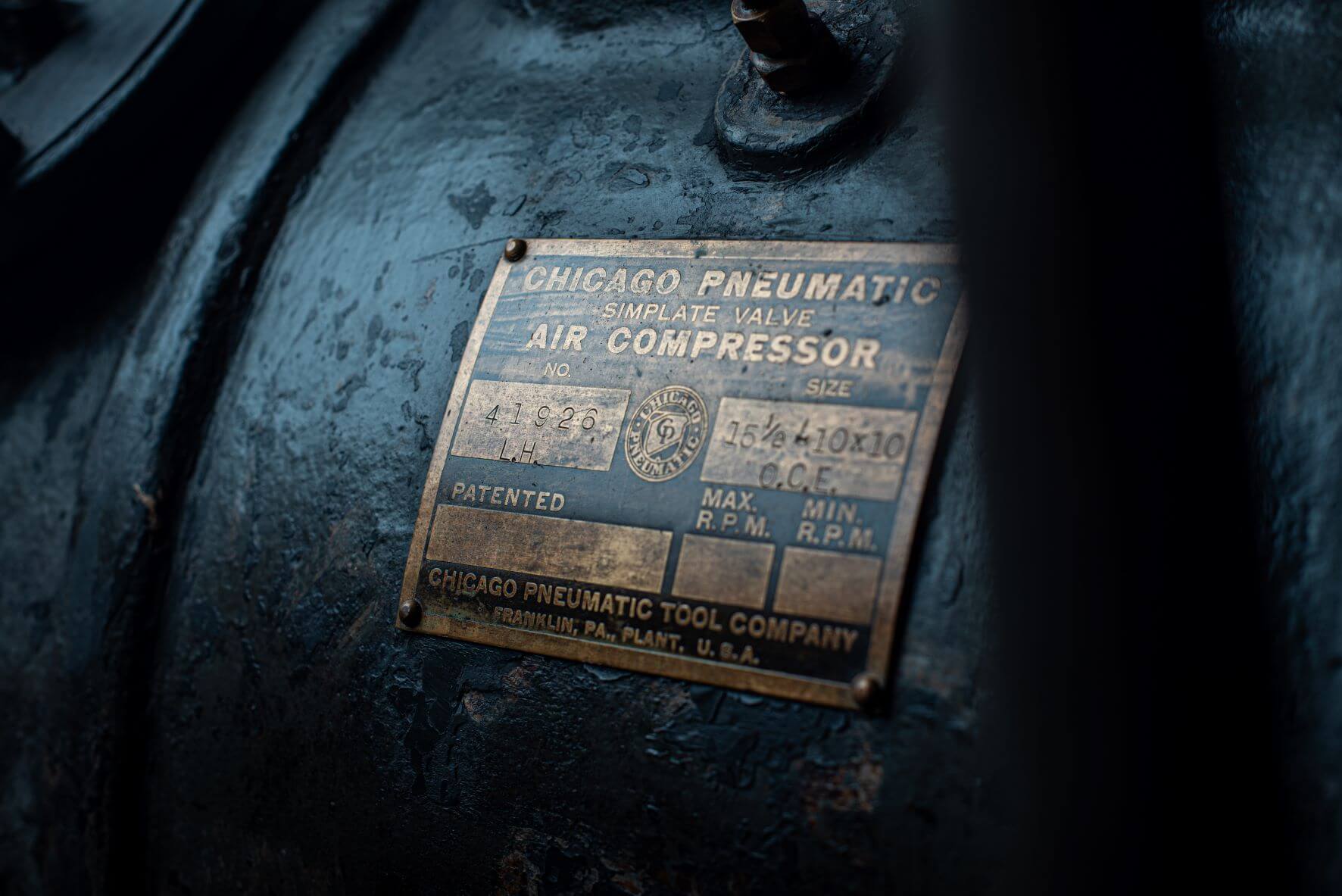
...some time later...
After World War II, the mine acquired funds that were allocated to it as part of war reparations. In 1948, a portion of these funds was designated for the purchase of a new, more powerful compressor from the Chicago Pneumatic factory in the state of Pennsylvania, replacing the Kosel compressor. From a perspective of work, electrical, and fire safety, the building housing the compressors soon began to show inadequacy, leading to discussions and plans for the construction of a new facility. The new building was completed in 1963 and expanded in 1966 and 1969.
Prior to the construction of the new structure, additional research was conducted, revealing that the Breitfeld compressor was insufficient for the growing operational needs of the mine. Offers for new compressors were sent to the top manufacturers in Europe at that time. The mine decided to choose and acquire Atlas Copco compressors, manufactured in Sweden. In 1961, the first compressor with a maximum pressure of 8.92 bar was delivered to the mine, replacing the Breitfeld compressor with a maximum pressure of 8.1 bar.
Research and subsequent findings from the late 1950s demonstrated a continuous decrease in the mercury content in the ore, necessitating additional measures and related technological capabilities and improvements. The increased amount of extracted ore required more workforce, consequently increasing the demand for compressed air. By the end of the 1960s, two additional Atlas Copco compressors were procured, and the compressor station building was expanded due to spatial constraints. When there was a significant need for compressed air to operate the machinery in the mine, which was not uncommon, all five compressors would operate simultaneously.
... and today
The Idrija Mercury Mine concluded mercury production in 1995. After 500 years of intensive extraction of cinnabar ore, stability conditions in the mine required professional remediation measures and deliberate backfilling of open underground spaces. For this purpose, the compressor station at 'Olimp' continued to operate until 2006, albeit with significantly reduced capacity. Since the earthquake in 1976, the building of the compressor station began to exhibit noticeable cracks, which became more significant after subsequent earthquakes in 1998 and 2004. The structure was severely damaged by the last earthquake, posing a threat to the safety of people and property. As a result, it was included in the Earthquake Consequences Mitigation Program in the Soča Valley on July 12, 2004. A decision was made, involving experts from various fields, to demolish the damaged structure and construct a replacement building in its place that would meet the requirements of post-earthquake reconstruction, legislation, and safety regulations. Using funds from the post-earthquake reconstruction, a new facility was built in 2020, which harmoniously combines the old and the new in its design and appearance, while commemorating the rich technical heritage of the mining town of Idrija. Our future task involves the interior arrangement of the building, presenting the operation of the station, and restoring the three preserved compressors.
Demolition of the old, dilapidated building …
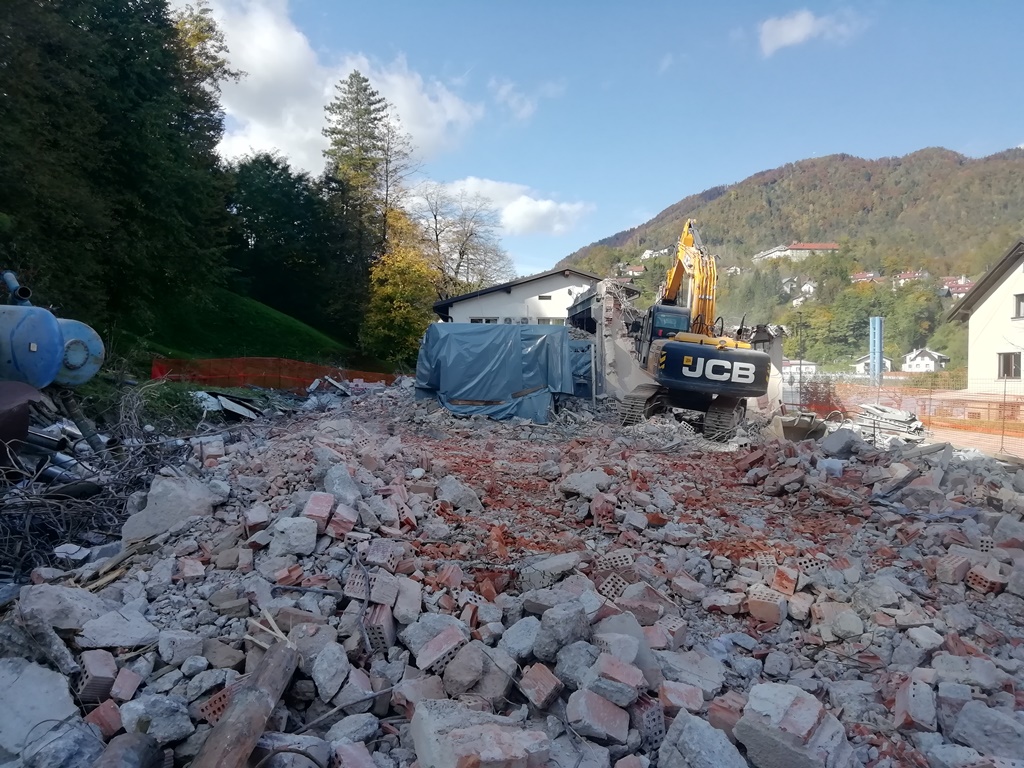
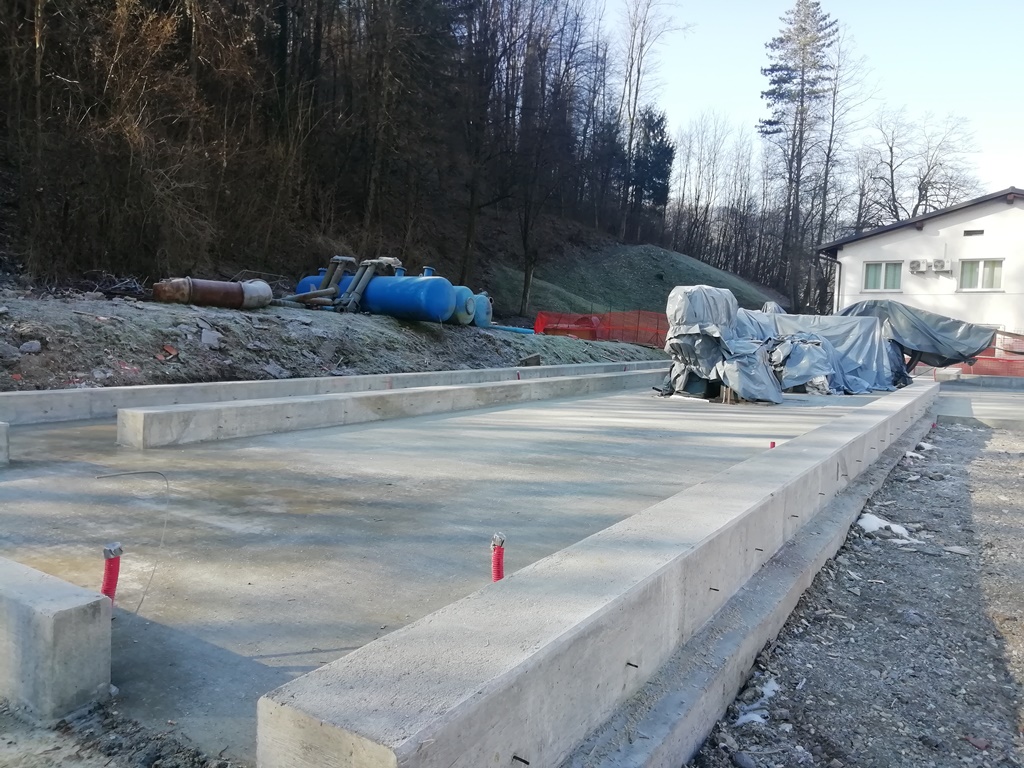
… and the construction of a new facility.
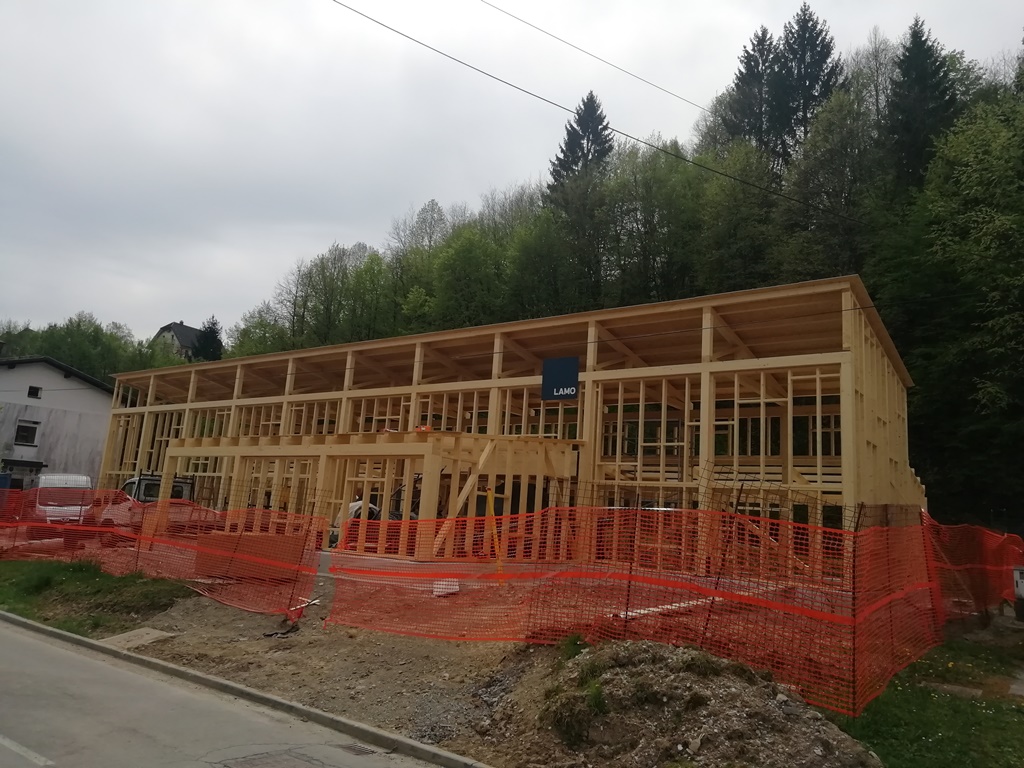
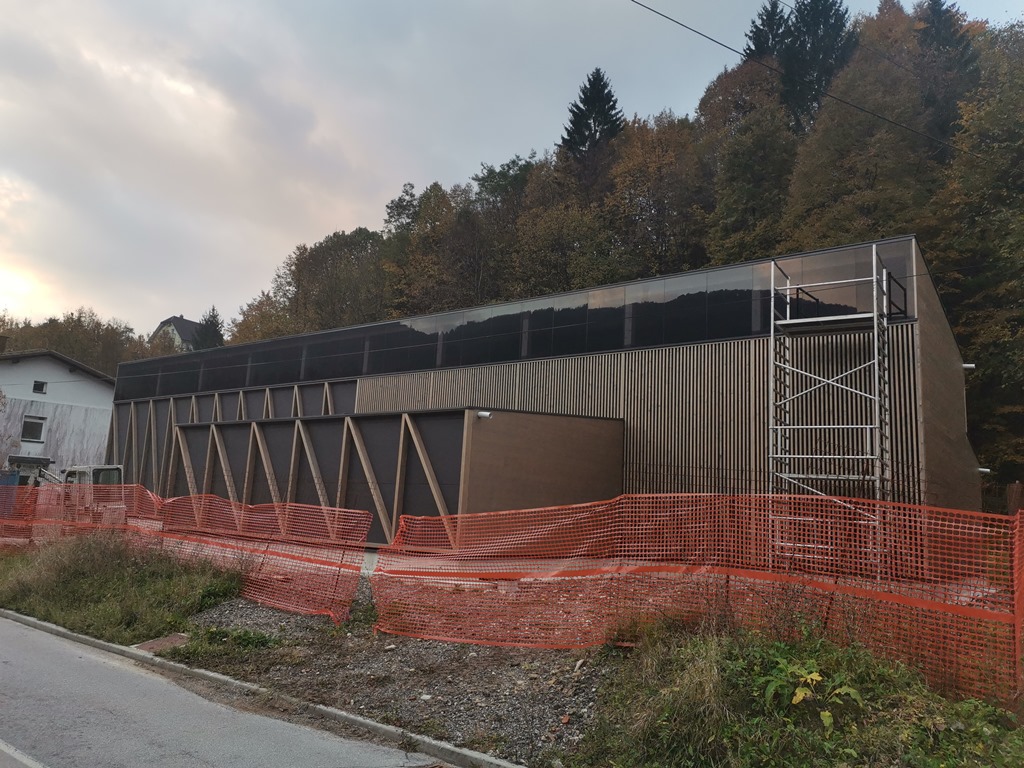
Based on:
- Mohorič Ivan, Rudnik živega srebra v Idriji, Mestni muzej Idrija, 1960
- Zelenc Anton, In vendar se giblje, Mestni muzej Idrija, 2001
- Oral sources; archives of CUDHg Idrija
Photos:
- Archive CUDHg Idrija